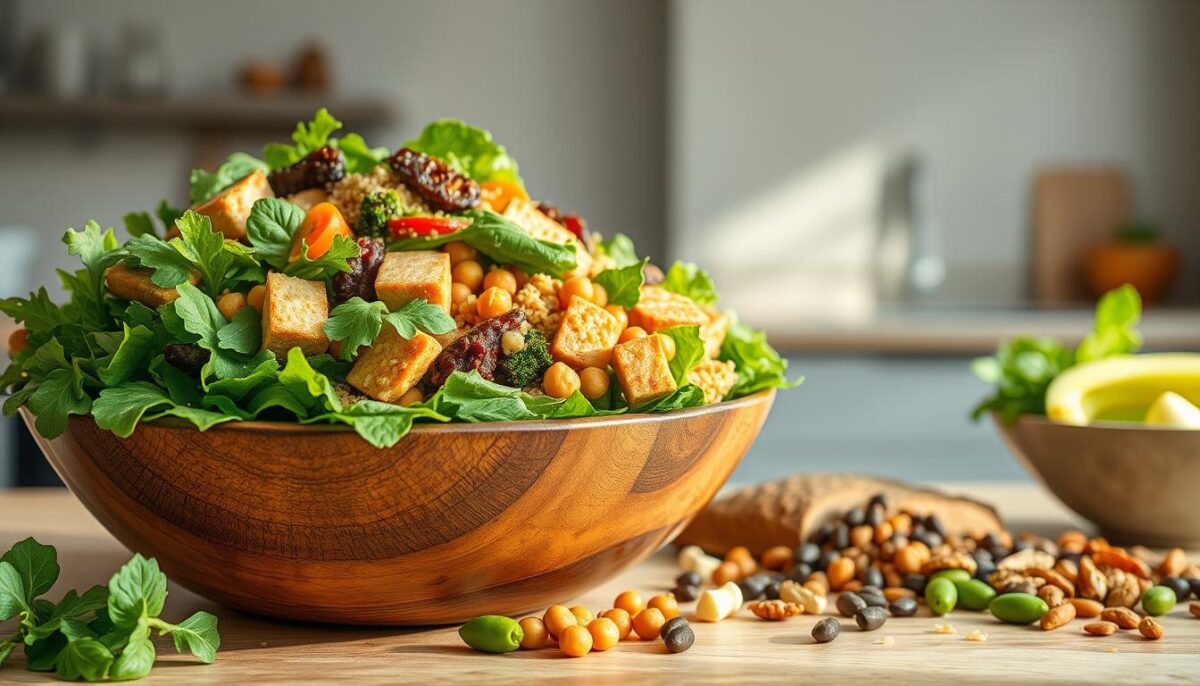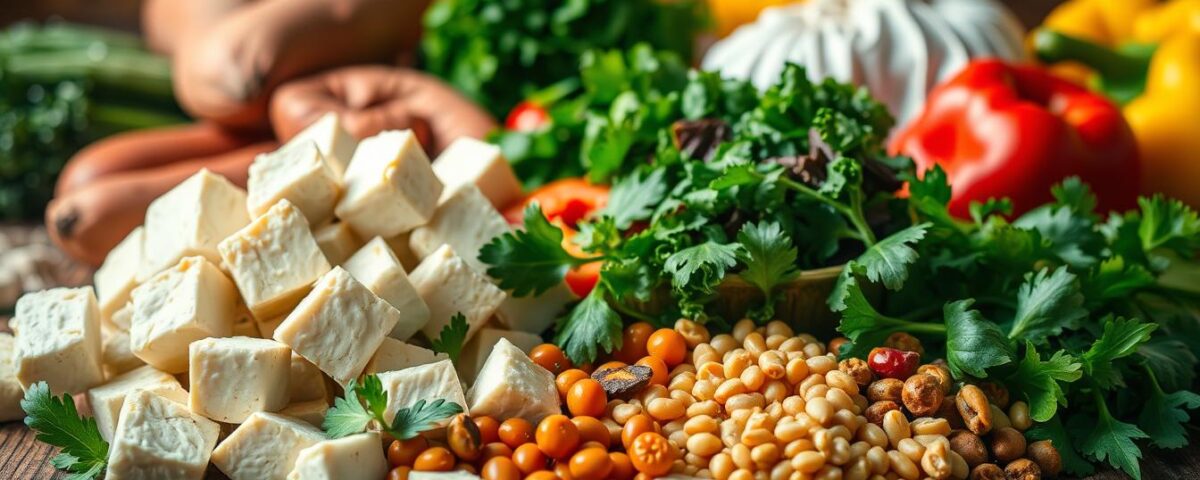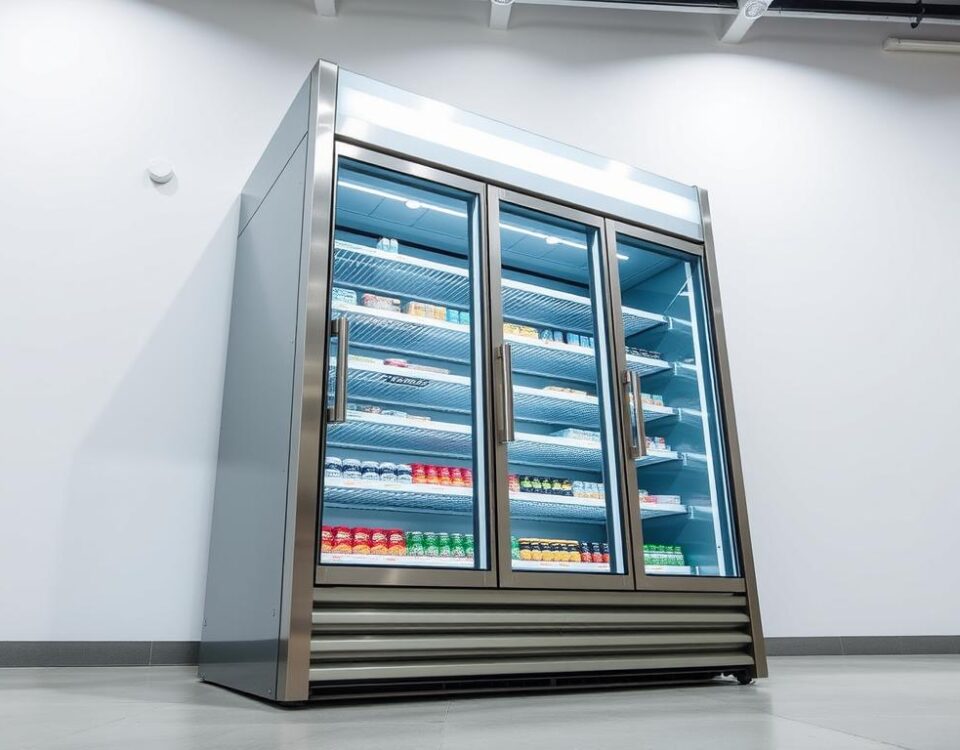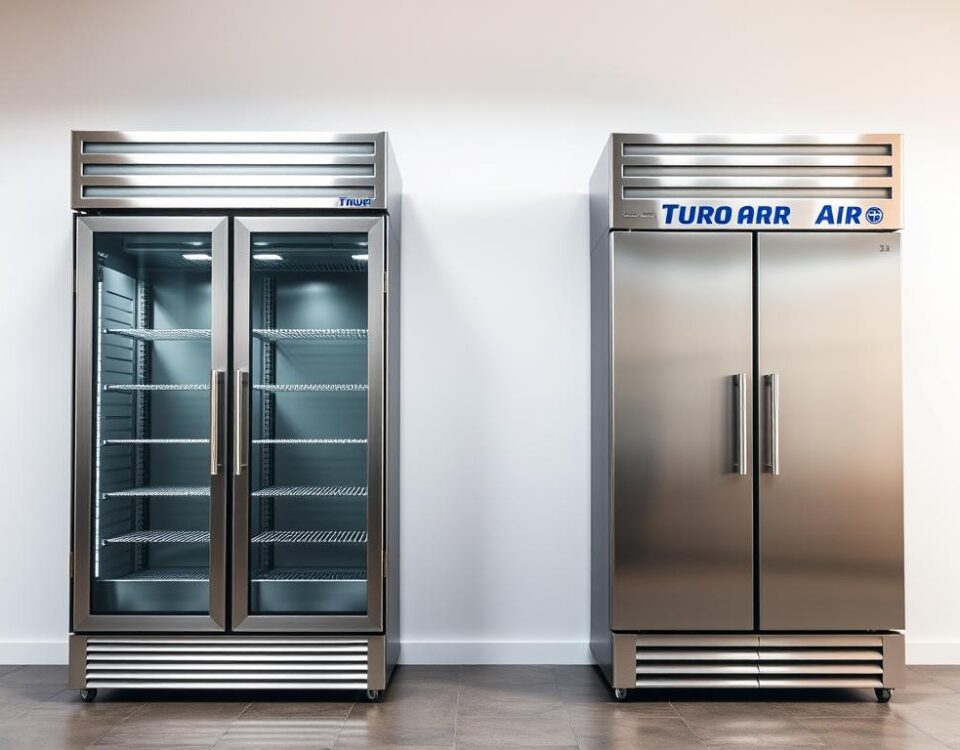
5 Hidden Signs That A Food Contains GMOs And How To Avoid Them
February 21, 2025
10 Guilt-Free Desserts Under 150 Calories You Won’t Believe Are Healthy
February 21, 2025When I first decided to explore a meatless lifestyle, I was worried about getting enough protein. Like many, I thought meat was the only reliable source. But as I dug deeper, I discovered a world of plant-based options that not only met my needs but also surprised me with their versatility and flavor.
Did you know that seitan packs a whopping 25 grams of protein per 3.5 ounces? That’s more than most cuts of beef! Or that lentils, a humble pantry staple, offer 18 grams of protein per cooked cup? These discoveries changed the way I approached my meals, proving that a meatless diet can be both satisfying and nutritious.
In this article, I’ll share eight incredible plant-based foods that can easily replace meat in your diet. From tofu to hemp seeds, these options are not only rich in protein but also packed with essential nutrients. Whether you’re fully committed to a vegan lifestyle or just looking to reduce your meat intake, these choices will keep you energized and inspired.
Key Takeaways
- Seitan contains 25 grams of protein per 3.5 ounces, making it a powerhouse meat alternative.
- Lentils provide 18 grams of protein per cooked cup, perfect for hearty meals.
- Tofu and tempeh are versatile options with 12 to 20 grams of protein per serving.
- Hemp seeds offer 9 grams of protein in just 3 tablespoons, ideal for smoothies or salads.
- Nutritional yeast adds a cheesy flavor and 8 grams of protein per half ounce.
- Quinoa is a complete protein, delivering 8 grams per cooked cup.
- Green peas are a surprising source, with nearly 9 grams of protein per cooked cup.
Introduction: My Journey Toward a Meatless Lifestyle
Switching to a meatless lifestyle was a big step for me, especially when it came to meeting my protein needs. Like many, I thought meat was the only reliable source. But as I explored, I found a world of plant-based options that surprised me with their versatility and flavor.
I chose this diet for several reasons. First, I wanted to improve my health. Studies show that plant-based diets can lower the risk of heart disease and high blood pressure. Second, I was curious about the nutritional benefits of plant-based protein. Did you know that lentils provide 18 grams of protein per cooked cup? That’s more than some meat options!
At first, I worried about getting enough vitamins and minerals. But with careful planning, I discovered that a well-balanced plant-based diet can meet all my needs. For example, fortified plant milk and nutritional yeast are excellent sources of vitamin B12.
Exploring different protein measurements opened my eyes to the variety of options available. From tofu to hemp seeds, each source offers unique benefits. This journey has taught me that transitioning to a plant-based diet can be both enjoyable and healthful.
Exploring High-protein vegan foods and Their Benefits
Protein plays a vital role in our health, and finding the right sources can be transformative. When I started focusing on plant-based options, I realized that not all foods are created equal. Some stand out as true powerhouses, offering not just protein but a range of essential nutrients.
What Makes a Food High in Protein?
A food is considered high in protein when it provides a significant amount per serving. For example, hemp seeds offer 9 grams of protein in just 3 tablespoons. This measurement, often referred to as “protein per serving,” helps us compare different options easily.
What surprised me most was how these plant-based sources stack up against traditional meat. Take lentils, for instance. They deliver 18 grams of protein per cooked cup, making them a fantastic alternative. Understanding these numbers has been key to planning my meals effectively.
Nutritional Advantages Over Meat
Beyond protein, plant-based options bring added benefits. They’re often rich in fiber, vitamins, and minerals, which are essential for overall health. For example, quinoa is a complete protein, meaning it contains all nine essential amino acids. It also provides iron and magnesium, nutrients that are sometimes harder to get on a meatless diet.
Another advantage is the lower saturated fat content. While meat can be high in unhealthy fats, many plant-based sources, like tofu and tempeh, are naturally lean. This makes them a heart-healthy choice without sacrificing protein intake.
These nutritional benefits have made me appreciate the versatility of plant-based options. They’re not just a substitute for meat—they’re a source of nourishment that supports long-term health.
Legumes: Beans and Lentils as Protein Powerhouses
Legumes have become a cornerstone of my diet, offering both nutrition and flavor. Among them, beans and lentils stand out as remarkable sources of protein. They’re not only packed with nutrients but also incredibly versatile in the kitchen.
Beans, like black beans and chickpeas, are naturally rich in protein. For example, a cooked cup of black beans provides about 15 grams. This makes them an excellent addition to soups, salads, and even desserts. Their creamy texture and mild flavor make them a favorite in my meals.
Lentils, on the other hand, are a true powerhouse. A cooked cup of green lentils delivers 18 grams of protein. They’re also quick to prepare, with red lentils cooking in just 5 minutes. I love using them in stews, curries, and even as a base for veggie burgers.
Health Benefits and Versatility
Beyond their protein content, legumes offer numerous health benefits. They’re rich in fiber, which aids digestion and keeps you full longer. Lentils, in particular, are high in iron and folate, essential for energy and overall health.
Here are some ways I incorporate legumes into my meals:
- Add cooked lentils to pasta sauces for extra texture and nutrients.
- Use chickpeas to make homemade hummus or roasted snacks.
- Mix black beans into brownies for a protein-packed dessert.
Legumes are also environmentally friendly. They require less water and produce fewer greenhouse gases compared to animal-based sources. This makes them a sustainable choice for anyone looking to reduce their carbon footprint.
Whether you’re new to legumes or a long-time fan, they’re a fantastic way to boost your daily protein intake. Their versatility and health benefits make them a staple in my kitchen.
Tofu: A Versatile Protein Alternative
When I first tried tofu, I was amazed by its versatility and how it could transform any dish. Made from soy, tofu is a fantastic source of protein, offering about 17 grams per 3.5-ounce serving. Its neutral flavor and adaptable texture make it a perfect substitute for meat in countless recipes.
One of the things I love most about tofu is its ability to absorb flavors. Whether marinated in soy sauce, garlic, or spices, it takes on the taste of whatever you pair it with. This makes it ideal for stir-fries, salads, and even desserts. My go-to method is pressing it to remove excess water, then marinating it for at least 30 minutes before cooking.
“Tofu is like a blank canvas—it’s all about how you prepare it.”
Beyond its culinary flexibility, tofu is packed with nutrients. It’s a complete protein, meaning it contains all nine essential amino acids. It’s also rich in calcium, iron, and magnesium, making it a powerhouse for anyone looking to boost their health.
Why Soy Matters
The soy in tofu isn’t just a source of protein—it’s also linked to numerous health benefits. Studies show that regular consumption can lower cholesterol levels and reduce the risk of heart disease. It’s even associated with a lower risk of certain cancers, making it a smart addition to any diet.
| Nutrient | Amount per 3.5 oz |
|---|---|
| Protein | 17g |
| Calcium | 53% DV |
| Iron | 15% DV |
| Magnesium | 14% DV |
If you’re new to tofu, start with firm or extra-firm varieties. They hold their shape well and are great for grilling or frying. For a creamy texture, try silken tofu in smoothies or desserts. And if you’re curious about other plant-based options, check out our guide on healthy cheese alternatives.
Experimenting with tofu has been a game-changer for me. Whether it’s in a hearty stir-fry or a light salad, it’s a delicious way to meet your daily protein needs. Give it a try—you might just discover a new favorite!
Quinoa and Other Protein-Rich Grains
Grains have always been a staple in my kitchen, but I never realized their full potential until I explored their protein content. Quinoa, in particular, stood out as a versatile and nutrient-packed source of plant-based protein.
What makes quinoa unique is its status as a complete protein. It contains all nine essential amino acids, making it a rare find among plant-based foods. With 8 grams of protein per cooked cup, it’s a fantastic alternative to meat.
Essential Nutrients and Benefits
Beyond protein, quinoa is rich in fiber, iron, and magnesium. These nutrients support digestion, energy levels, and overall health. Other grains like amaranth and teff also offer impressive protein per serving, along with essential vitamins and minerals.
Here’s a quick comparison of protein content in popular grains:
| Grain | Protein per Cooked Cup |
|---|---|
| Quinoa | 8g |
| Amaranth | 9g |
| Teff | 10g |
Incorporating these grains into your meals is easy. I often use quinoa as a base for salads or stir-fries. Amaranth works well in porridge, while teff adds a nutty flavor to baked goods.
Experimenting with different grains has added variety and texture to my meals. Whether it’s a hearty quinoa bowl or a warm amaranth breakfast, these sources of protein have become essential in my kitchen.
Nuts & Seeds: Tiny Protein Bombs
Nuts and seeds have become my go-to for quick, nutrient-packed snacks and meals. Though small in size, they deliver a serious punch of protein and healthy fats. From chia to hemp, these tiny powerhouses have transformed the way I approach my daily nutrition.
One of my favorites is hemp seeds, which offer 9 grams of protein per 3 tablespoons. They’re perfect for sprinkling on salads or blending into smoothies. Chia seeds are another versatile option, adding texture and nutrients to puddings and baked goods.
Incorporating Hemp, Chia, and More
What I love most about nuts and seeds is their versatility. Almonds, for example, are a great snack on their own or a crunchy topping for oatmeal. Walnuts add richness to salads, while pumpkin seeds bring a nutty flavor to granola.
Here are some creative ways I use these ingredients:
- Blend hemp seeds into smoothies for a protein boost.
- Make chia pudding by soaking chia seeds in almond milk overnight.
- Add crushed nuts to baked goods for extra texture and flavor.
These ingredients not only enhance the protein content of meals but also improve their nutrient profile. They’re rich in fiber, vitamins, and minerals, making them a smart addition to any diet.
Portion control is key when it comes to nuts and seeds. A small handful is usually enough to reap the benefits without overdoing the calories. Pairing them with fruits or vegetables creates a balanced snack that keeps me energized throughout the day.
Experimenting with different combinations has been a game-changer for me. Whether it’s a chia seed smoothie or a handful of almonds, these tiny protein bombs have become an essential part of my kitchen.
Vegan Milk and Butter Alternatives for Added Protein
Exploring plant-based milk and butter alternatives opened up a new world of flavor and nutrition for me. I was amazed by how these options not only replaced dairy but also added a surprising amount of protein to my diet. Whether you’re lactose intolerant or simply looking for healthier choices, these alternatives are worth considering.
Comparing Plant-Based Options
Not all plant-based milks are created equal. For example, soy milk stands out with 8 grams of protein per cup, making it a top choice. Almond milk, while lower in protein, is a great source of healthy fats. Oat milk offers a creamy texture and around 3-4 grams of protein, especially in fortified versions.
Here’s a quick comparison of popular options:
- Soy milk: 8g protein per cup, complete amino acids.
- Almond milk: 1g protein per cup, rich in vitamin E.
- Oat milk: 3-4g protein per cup, high in fiber.
When it comes to butter alternatives, I’ve found that nut-based spreads like almond or cashew butter are excellent additions. They provide 3-4 grams of protein per tablespoon and add a rich, nutty flavor to toast or baked goods.
Personal Experiences and Recipe Tweaks
I’ve experimented with these alternatives in my cooking and baking. Soy milk works perfectly in smoothies and coffee, while oat milk adds creaminess to soups and sauces. For baking, I often use almond butter as a substitute for traditional butter, and it never disappoints.
“Switching to plant-based milk and butter didn’t just change my diet—it transformed my meals.”
Choosing the right product can make a big difference. For example, fortified versions of almond or oat milk can boost your protein intake significantly. I always check labels to ensure I’m getting the most nutrients possible.
These alternatives are more than just substitutes—they’re a way to enhance your meals with added protein and unique flavors. Whether you’re new to plant-based options or a seasoned pro, there’s something for everyone to enjoy.
Protein-Packed Vegan Salads to Fuel Your Day
Creating protein-packed salads has become a game-changer for my daily meals, offering both flavor and nutrition. I’ve discovered that combining the right ingredients can significantly boost the protein per cup count, making salads a satisfying and wholesome option.

One of my favorite combinations includes chickpeas, quinoa, and spinach. A single cup of chickpeas provides about 15 grams of protein, while quinoa adds another 8 grams. Toss in some spinach for fiber and vitamins, and you’ve got a meal that’s both filling and nutritious.
“A well-crafted salad isn’t just a side dish—it’s a complete meal that fuels your body and satisfies your taste buds.”
Here’s a quick breakdown of a protein-rich salad recipe:
| Ingredient | Protein per Cup |
|---|---|
| Chickpeas | 15g |
| Quinoa | 8g |
| Spinach | 1g |
| Nutritional Yeast | 8g |
To make this salad even more exciting, I add roasted sweet potatoes and a creamy cashew dressing. The sweet potatoes provide complex carbs, while the cashews add healthy fats and extra protein. This combination keeps me energized throughout the day.
Another tip is to include legumes like lentils or black beans. A cup of cooked lentils offers 18 grams of protein, making them a fantastic source of plant-based nutrition. Pair them with avocado for healthy fats and a sprinkle of hemp seeds for an extra boost.
When preparing salads, I always aim for balance. Here’s how I do it:
- Start with a base of leafy greens like kale or spinach for fiber.
- Add a protein source like beans, tofu, or tempeh.
- Include colorful vegetables for vitamins and minerals.
- Top with nuts or seeds for crunch and added nutrients.
Evaluating the nutritional content of your ingredients is key. For example, choosing fortified plant-based milk or nutritional yeast can enhance the protein and vitamin profile of your meal. This approach ensures that every bite is as nourishing as it is delicious.
Experimenting with different combinations has made salads a staple in my kitchen. Whether it’s a hearty grain bowl or a light, refreshing mix, these meals are proof that eating well doesn’t have to be complicated.
Mushrooms and Emerging Plant-Based Protein Sources
Mushrooms have always intrigued me, not just for their earthy flavor but for their surprising nutritional benefits. While they’re often seen as a side dish, they’re actually a fantastic source of protein and essential minerals. This made me curious about other emerging plant-based options that are often overlooked.
What I discovered was eye-opening. Mushrooms like shiitake and portobello aren’t just delicious—they’re packed with nutrients. For example, a cup of cooked shiitake mushrooms provides about 3 grams of protein. While this might seem modest, it’s their combination of protein and other nutrients like magnesium that makes them stand out.
“Mushrooms are more than just a garnish—they’re a nutrient powerhouse waiting to be explored.”
Nutrient Value Beyond the Usual
One of the things I love most about mushrooms is their versatility. They can be grilled, sautéed, or even used as a meat substitute in dishes like burgers or stir-fries. But beyond their culinary uses, they offer unique health benefits. For instance, magnesium in mushrooms supports muscle function and energy production, making them a smart addition to any diet.
Here’s a quick comparison of protein and magnesium content in popular mushroom varieties:
| Mushroom Type | Protein per Cup | Magnesium per Cup |
|---|---|---|
| Shiitake | 3g | 18mg |
| Portobello | 4g | 20mg |
| Cremini | 3.5g | 15mg |
Incorporating mushrooms into meals is easy and rewarding. I often add them to soups, pasta dishes, or even as a topping for pizza. Their umami flavor enhances any dish, while their nutritional profile ensures I’m getting essential nutrients like magnesium.
Exploring these emerging plant-based options has been a game-changer for me. They’ve not only diversified my protein sources but also added a new layer of creativity to my cooking. Whether it’s a hearty mushroom stew or a light salad, these ingredients have become a staple in my kitchen.
Vegan Meat Substitutes Beyond Traditional Soy
Exploring beyond traditional soy-based products has opened my eyes to a world of innovative meat substitutes. While soy remains a popular choice, there are now countless alternatives that offer unique textures, flavors, and nutritional benefits. These options not only replicate the taste of meat but also provide a satisfying protein boost.
One of my favorites is pea protein-based products. They have a meaty texture and deliver about 20 grams of protein per serving. Brands like Beyond Meat and Impossible Foods have mastered the art of creating plant-based burgers and sausages that are almost indistinguishable from their animal-based counterparts.
Innovative Options for Variety
Another exciting alternative is mycoprotein, derived from fungi. It’s a complete protein source and offers a chewy texture similar to chicken. Products like Quorn use mycoprotein to create nuggets, patties, and even ground meat substitutes. What I love most is its versatility—it works well in stir-fries, salads, and even casseroles.
For those looking for something different, jackfruit is a fantastic option. While it’s lower in protein, its shredded texture mimics pulled pork or chicken. I often use it in tacos or sandwiches, paired with a flavorful sauce to enhance its natural taste.
“Experimenting with these substitutes has added so much variety to my meals—it’s like rediscovering food all over again.”
Egg-based analogs are also gaining popularity. Made from mung beans or chickpeas, these products replicate the texture and flavor of scrambled eggs. They’re a great way to boost your protein intake while keeping meals light and nutritious.
Here are some of my top picks for innovative meat substitutes:
- Beyond Meat Beyond Steak: 21 grams of protein per serving.
- Gardein Seven Grain Crispy Chick’n: 10 grams of protein per serving.
- Noble Plate Plant-Based Crumbles: 45 grams of protein per serving.
These products are not just about replacing meat—they’re about expanding your culinary horizons. Whether you’re a seasoned vegan or just starting out, these alternatives offer endless possibilities for creativity in the kitchen.
I encourage you to try these options and see which ones resonate with your taste buds. You might just find a new favorite that transforms the way you think about plant-based eating.
Enhancing Iron and Essential Mineral Intake on a Vegan Diet
Ensuring I get enough iron and essential minerals has been a key focus in my plant-based journey. While it’s easy to meet these needs with the right foods, understanding how to optimize absorption is just as important. Here are some practical strategies I’ve learned along the way.
One of the best ways to boost iron intake is by incorporating iron-rich foods like lentils, tofu, and spinach. For example, a cup of cooked lentils provides about 6.6 milligrams of iron, while tofu offers a similar amount. Pairing these with vitamin C-rich foods like bell peppers or citrus fruits can enhance absorption significantly.
Monitoring fat content is also crucial. While healthy fats are essential, too much can interfere with mineral absorption. I focus on balanced meals that include a mix of nutrients without overloading on fat. For instance, adding avocado to a spinach salad provides healthy fats without compromising iron uptake.
Combining foods strategically can optimize both mineral and magnesium intake. Foods like quinoa, almonds, and dark leafy greens are excellent sources of these nutrients. I often create meals that include multiple nutrient-dense ingredients, such as a quinoa bowl with spinach, chickpeas, and a squeeze of lemon.
“Balancing nutrients isn’t just about what you eat—it’s about how you combine them.”
Here’s a quick guide to some iron-rich foods and their iron content:
| Food | Iron per Cup |
|---|---|
| Cooked Lentils | 6.6mg |
| Tofu | 6.6mg |
| Cooked Spinach | 6.4mg |
| Cooked Kidney Beans | 5.2mg |
Maintaining balanced health on a plant-based diet is entirely achievable with the right approach. By focusing on nutrient-rich foods and smart combinations, I’ve been able to meet my daily needs for iron, magnesium, and other essential minerals. It’s all about making informed choices and enjoying the process.
Creative Vegan Recipes for Quick Protein Boosts
Busy days call for quick, nutrient-packed meals that keep you energized. I’ve discovered that with the right ingredients, you can whip up delicious dishes in no time. These recipes are designed to provide a protein boost without sacrificing flavor or time.
Easy Meal Ideas for Busy Days
One of my favorites is a simple stir-fry with tofu and vegetables. A 3.5-ounce serving of tofu offers about 17 grams of protein, making it a great source for a quick meal. I pair it with broccoli and bell peppers, adding a splash of soy sauce for flavor.
For breakfast, I often make a smoothie with almond milk, chia seeds, and a handful of spinach. Two tablespoons of chia seeds provide about 4 grams of protein, and almond milk adds creaminess without the dairy. It’s a refreshing way to start the day.
“These recipes are proof that eating well doesn’t have to be complicated.”
Another go-to is a quinoa bowl with black beans and avocado. A cooked cup of quinoa delivers 8 grams of protein, while black beans add another 15 grams. I top it with avocado for healthy fats and a sprinkle of hemp seeds for an extra boost.
Here’s a quick breakdown of protein content in these recipes:
| Ingredient | Protein per Serving |
|---|---|
| Tofu | 17g |
| Chia Seeds | 4g |
| Quinoa | 8g |
| Black Beans | 15g |
These meals are not only quick but also packed with nutrients. For more ideas on sourcing fresh and local vegetables, check out this guide on fresh and local vegetables.
Experimenting with different combinations has made meal prep a breeze. Whether it’s a hearty stir-fry or a light smoothie, these recipes are proof that eating well doesn’t have to be complicated.
Tips for Maintaining a Balanced, Nutrient-Dense Vegan Diet
Maintaining a balanced, nutrient-rich diet has been a cornerstone of my health journey. Over time, I’ve learned that small, intentional habits can make a big difference in meeting daily nutritional needs. Here are some practical tips that have worked for me.
Optimizing Your Daily Nutrition
One of the best ways to ensure you’re getting enough protein is to incorporate a variety of sources into your meals. For example, I often use pea protein in smoothies or as a base for soups. It’s a quick and easy way to boost your intake without compromising flavor.
Another staple in my kitchen is hemp seed. I sprinkle it on salads, oatmeal, or even blend it into dressings. Just three tablespoons provide 9 grams of protein, making it a versatile addition to any dish.
“Balancing your diet isn’t just about what you eat—it’s about how you combine ingredients to maximize nutrients.”
Managing sugar intake is also crucial. I focus on whole, unprocessed foods and limit added sugars to no more than 6 teaspoons a day. This helps maintain energy levels and supports overall health.
Everyday Habits for Nutrient-Rich Meals
Here are some simple habits I’ve adopted to keep my meals balanced and satisfying:
- Start with a base of leafy greens for fiber and essential nutrients.
- Add a protein source like lentils, tofu, or tempeh.
- Include healthy fats from avocado or nuts to enhance nutrient absorption.
Combining foods strategically can also optimize nutrient intake. For example, pairing iron-rich spinach with vitamin C-rich bell peppers improves iron absorption. These small tweaks can make a big impact on your overall health.
Making Healthy Eating Convenient
Busy days don’t have to mean sacrificing nutrition. I keep prepped ingredients like cooked quinoa, roasted vegetables, and marinated tofu on hand. This makes it easy to throw together a balanced meal in minutes.
Experimenting with new recipes has also kept things exciting. Whether it’s a hearty grain bowl or a light salad, these meals are proof that eating well doesn’t have to be complicated.
Conclusion
Exploring plant-based options has been a rewarding journey, especially when it comes to meeting my nutritional needs. I’ve discovered that a well-planned diet can provide all the protein and essential nutrients my body requires. From lentils to tofu, each source offers unique benefits that make it easy to replace meat without sacrificing flavor or health.
What I’ve learned is that variety is key. Incorporating different plant-based options ensures you get a wide range of nutrients while keeping meals exciting. Whether you’re new to this lifestyle or a seasoned pro, there’s always something new to try.
I encourage every person to experiment and find joy in exploring these nutrient-rich choices. A plant-based diet isn’t just about health—it’s about embracing a lifestyle that’s sustainable, delicious, and fulfilling. Start small, stay curious, and enjoy the journey!
FAQ
Why did I choose a meatless lifestyle?
I wanted to improve my health, reduce my environmental impact, and explore new ways to nourish my body with plant-based options.
What makes a food high in protein?
A food is considered high in protein if it provides a significant amount of this nutrient per serving, often comparable to or exceeding traditional meat sources.
Are beans and lentils good protein sources?
Absolutely! Beans and lentils are packed with protein, fiber, and essential nutrients, making them a staple in my diet.
How can I use tofu in my meals?
Tofu is incredibly versatile. I use it in stir-fries, scrambles, salads, and even desserts for a protein boost.
What grains are rich in protein?
Quinoa, amaranth, and teff are excellent choices. They’re not only high in protein but also loaded with vitamins and minerals.
Which nuts and seeds are best for protein?
I love hemp seeds, chia seeds, and almonds. They’re nutrient-dense and easy to add to smoothies, oatmeal, or snacks.
Are plant-based milks a good protein source?
Yes! Options like soy milk and pea milk are great for adding protein to my morning coffee or cereal.
Can I make protein-packed vegan salads?
Definitely! I combine quinoa, chickpeas, nuts, and seeds with fresh veggies for a filling and nutritious meal.
Are mushrooms a good protein source?
While not as high in protein as legumes, mushrooms add unique flavor and nutrients to my meals, complementing other protein-rich ingredients.
What are some innovative vegan meat substitutes?
Beyond traditional soy, I enjoy options like jackfruit, seitan, and pea protein-based products for variety and texture.
How do I ensure I’m getting enough iron on a vegan diet?
I focus on iron-rich foods like lentils, spinach, and fortified cereals, and pair them with vitamin C to enhance absorption.
What are some quick protein-boosting recipes?
I whip up smoothies with hemp seeds, make tofu scrambles, or toss together a quinoa salad for a fast and nutritious meal.
How can I maintain a balanced vegan diet?
I aim for variety, incorporating legumes, grains, nuts, seeds, and plenty of colorful veggies to meet my nutritional needs.



